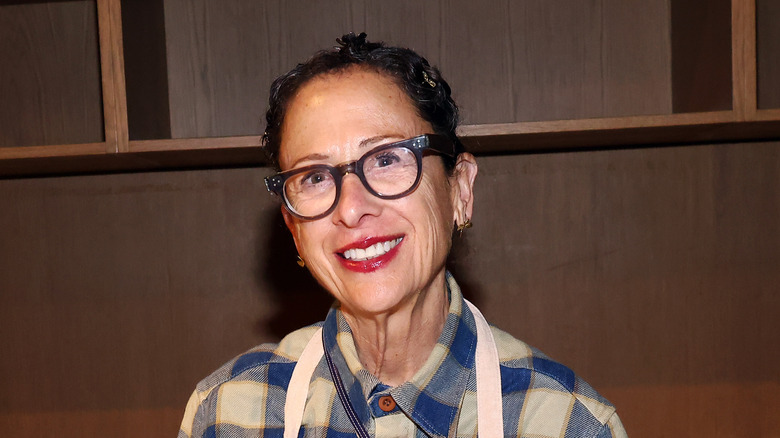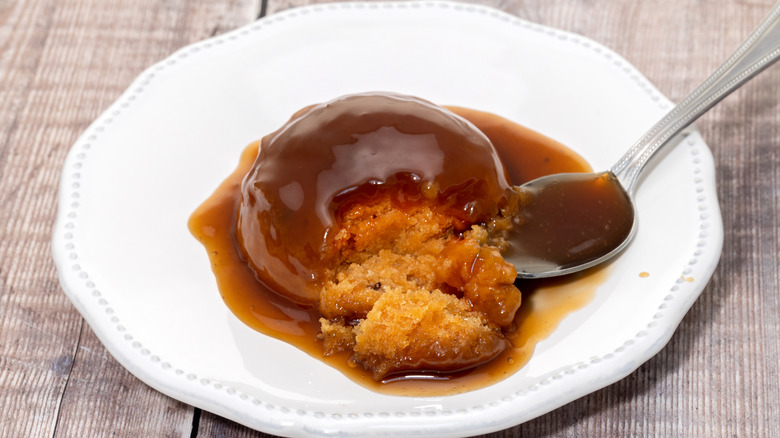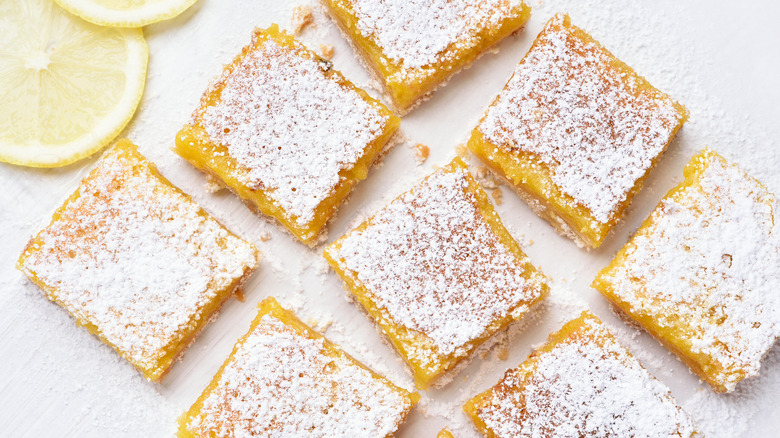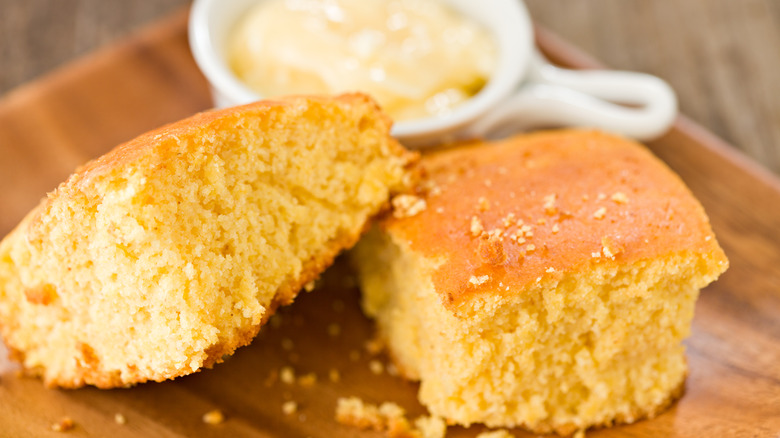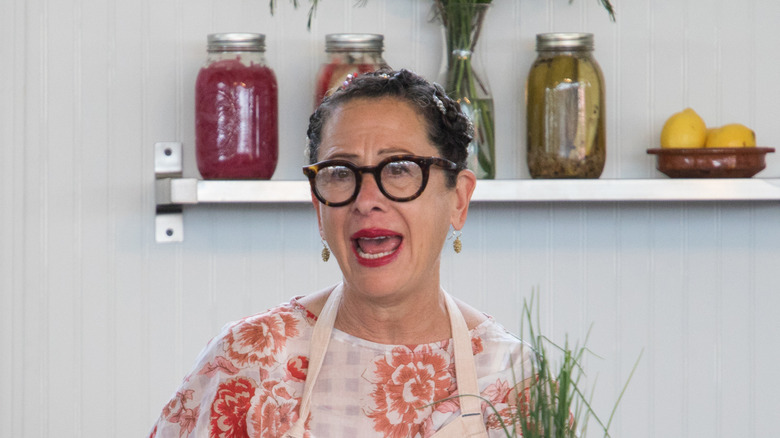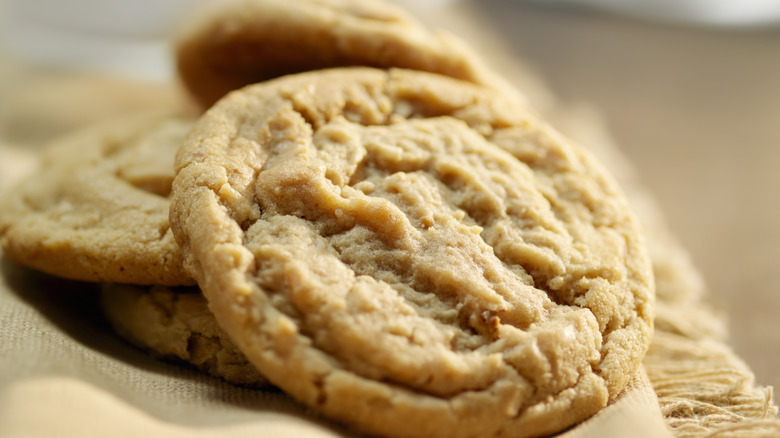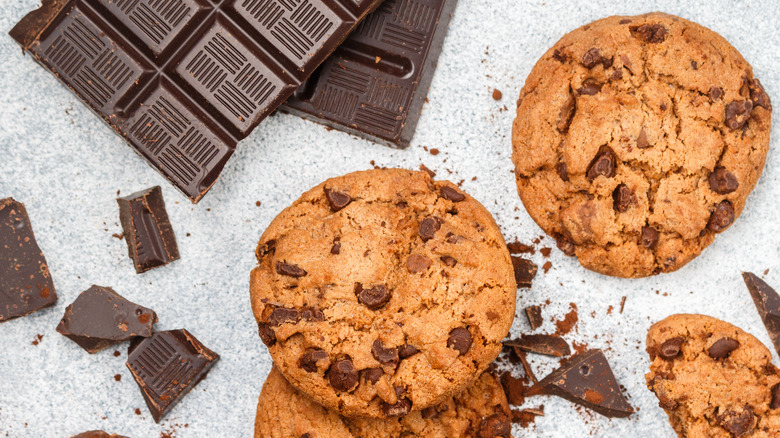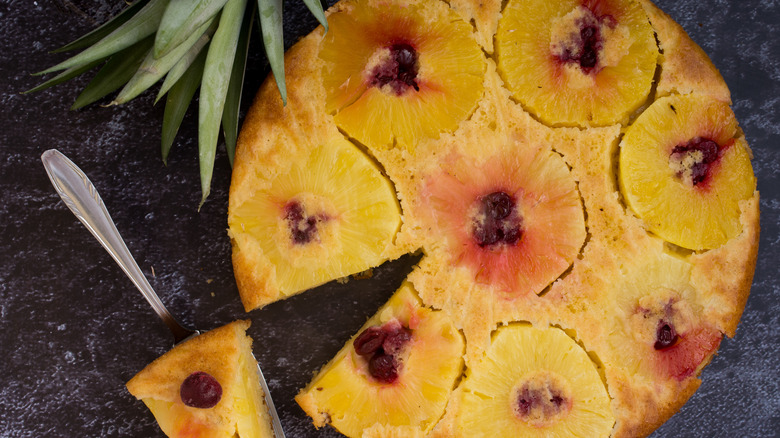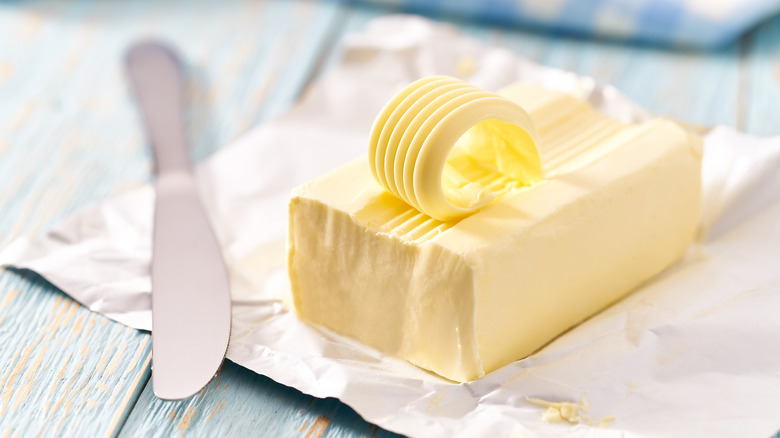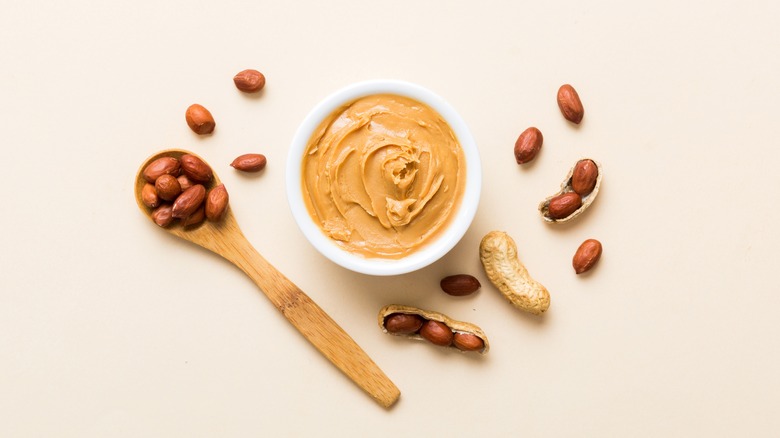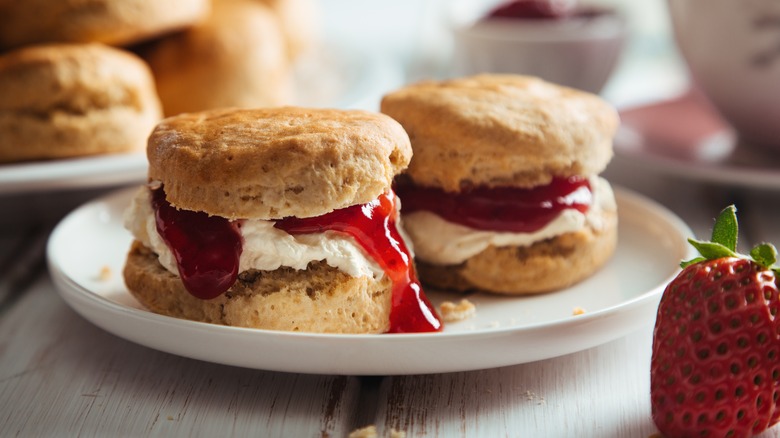Nancy Silverton On The Cookie That Changed Her Life - Exclusive Interview
We may receive a commission on purchases made from links.
Chef and cookbook author Nancy Silverton is a legend in the world of American food and baking. She has served as the pastry chef for legendary chef-restaurateurs like Wolfgang Puck and Jonathan Waxman. As the founder of La Brea Bakery, she helped bring sourdough bread into the mainstream. A James Beard Award winner, she also co-owns several restaurants in Southern California, including Osteria Mozza and Pizzeria Mozza.
Now, she has a new book out in which she uses her wide scope of culinary knowledge to create the perfect recipes for classic American baked goods like cookies, snacking cakes, and biscuits. Called "The Cookie That Changed My Life," the book was inspired by a chance encounter Silverton had with an awe-inspiring peanut butter cookie. In an exclusive interview with Tasting Table, Silverton told us about how she developed the recipes in the book and why she wanted to create definitive versions of these iconic treats. She also shared helpful tips for making chocolate chip cookies, cornbread, lemon bars, and more that you'll be able to use in your home baking.
Baking over the holidays
Are there any holiday desserts you are really excited to make this year?
I have my new book out, so there's certainly a few in there. When I think of the holidays, I think of cold weather — although us in Los Angeles don't really know what cold weather is, but we see from pictures what the rest of the country or world looks like. I think of desserts that have warm spices like Claudia Fleming's ginger cake that's in my book, or the sticky toffee pudding that's in the book. That's always good.
You also think of the holidays as having more morning leisurely times, meaning that with a lot of people and a lot of workplaces, they'll be closed for the two weeks around Christmas and New Year's. That's a time to have more baked goods, like some of the muffins in the book or certainly the sweet roll — something maybe that one couldn't ordinarily do with a busy, hectic schedule.
My book in particular, "The Cookie That Changed My Life," has lots and lots of great suggestions for great baked goods that aren't very technically challenging. Maybe when one is to read it immediately, they think, "Oh, this looks too hard" because it might be two pages long, but it's two pages' worth of instructions that set one up for success, not two pages' worth of complicated techniques that involve all sorts of kitchen equipment that people don't have.
You're very thorough in your instruction.
I always have been in my books. That's the one criticism that I get sometimes — "Your recipes are so long." But if people read them, they would see I'm just giving all the instructions to make sure that what's made comes out.
The recipes that gave Nancy Silverton the most trouble
What sticks out as the hardest recipe to develop for the book?
There were a few in there that I would've thought would've been really easy. One that comes to mind right away, because I was talking about it yesterday with somebody, was the yellow cake with the chocolate frosting — what I call people's go-to birthday cake. I thought it would be simple because there's just the very basic ingredients in that cake: There's eggs and there's sugar, and there is butter, and I use buttermilk in there. A lot of other people, with their yellow cake, might use whole milk, but there was nothing else different with the ingredients.
It was so critical as to when I put those ingredients together and in what proportions in terms of what the result was. The tenderness of the crumb, the depth of flavor in the cake itself, the moisture — those are all crucial points for me, and I couldn't get it right. I must have made that cake alone over two dozen times, which is many tries for something that's seemingly so ordinary like a yellow cake. It was challenging.
There were other ones such as the lemon bars; I was never a fan of lemon bars. I had to do it so many times and try so many different options until I came up with a lemon bar that I felt I could eat. That ended up being a lemon bar that was not baked except for the underneath part, which is usually in the form of a cake or a cookie-like layer. That part was baked, but the lemon filling on top wasn't a baked filling because that was what threw me off and added to my dislike of the overly sweet lemon bar. I didn't like that flavor when that eggy custard was baked in the oven. Instead, I chose to turn that lemon bar into one of my favorite French desserts, which is a lemon curd tart. I married the two, and after I did that, it's like, "Okay, this is a lemon bar that I'll eat."
The problems with traditional lemon bars and cornbread
What goes wrong when the filling of a lemon bar is baked?
The flavor changes when it's baked because there's a lot of eggs in it — it almost has this ... I don't want to say a sulfur flavor, but this off flavor that is not bright. When I think of a lemon dessert, I think of something that's super acidic, not sweet, and has a bright finish. I never made lemon bars before this book. By the way, there's more than a handful of desserts I never made; I just thought they belonged in the book. But when I would see these lemon bars at dessert counters or coffee shops or whatever, what was always so off-putting is they were always heavily dusted ahead of time in powdered sugar. What happens to powdered sugar as it sits on something that's very acidic, like lemon or something that's refrigerated, is the sugar starts to melt and kind of sweat on top. That was always such an unappealing look, and I couldn't figure out why a lemon bar has always been finished that way.
In mine, I instruct the baker to add that powdered sugar finish before serving, and only to the slices that are going to be eaten. Rather than dusting the entire lemon bar with sugar that's going to melt, I say, "Look, don't do it that way. Add powdered sugar to order, and then it looks bright and fresh and it turns it into something that's not tired-looking but something that you would want to eat."
It seems like the cornbread recipe was quite a journey as well.
It certainly was. It only was a journey, and it took a long time — again, because when I looked at and analyzed what I didn't like about cornbread, it was that it never tasted like corn. Now, maybe it was never supposed to taste like corn. I didn't grow up eating cornbread, so I'm not sure. But to me, a cornbread, given the name, should have sort of a corn flavor to it at least. Creaming the corn, straining out the natural milkiness that comes out of that corn, then heating it up and turning it into a pudding-like consistency with a whole lot of flavor and reincorporating that into the cornbread — [that] changed the flavor, and I was happy with what the result was.
Why she wrote a book of American classic desserts
Do you think that there's a tendency for classically trained pastry chefs to not give the classic American baked goods their due?
Yes, because some of them are so basic. A lot of them are, again, not challenging, meaning that you can't show off. If you're a technically trained pastry chef and maybe European or something, you might want to do something that is outside of the home cook's ability to teach them something, [like] a laminated dough, maybe more like a kouign-amann or a croissant or ones that are in that category.
You talk in the intro of the book about the impulse that some pastry chefs have to, say, add matcha to croissants ...
That's not the kind of book that I wanted to write. I didn't want to write a book that was overly creative. I didn't want to change those classics. What I wanted to do was to provide people with the best version of things they wanted to make anyway. When you start getting overly creative with classics, you make them, you eat them, and in the end, you say, "I'd rather have the original." They're classics for a good reason. It's because the flavor is familiar or it brings up a lot of memories, or for whatever reason that those classics have such an important place in people's hearts. That wasn't my intention in the book to turn classics into something unrecognizable.
The peanut butter cookie that changed her life
What was it about Roxana Jullapat's peanut butter cookie that made it the bolt of lightning that inspired the book?
It was after eating this near perfect — I say "near perfect" only because I changed it — but it was after eating this perfect peanut butter cookie and then me taking it and giving it even a boost of more peanut butter flavor without changing the profile. It made me think that's the kind of book that I wanted — a book with all the classics that were carefully looked at and refigured so that they were the best versions of themselves. Because as I've been saying lately, when I first started baking, the recipes that I had to work with were always limited to what was on my cookbook shelf.
If I wanted to make a chocolate chip cookie, I would look at my cookbook shelf and pick an author that I thought, "Oh, that person probably did a great version of a chocolate chip cookie," and then I would make it. But now, with everybody's access to Google, you google "chocolate chip cookie" and out comes a thousand versions of a chocolate chip cookie. I wanted to narrow that down.
Chocolate chip cookie tips
Speaking of chocolate chip cookies, that's one of those recipes that everyone is trying to perfect. What were you going for? Yours is a spin on the famous Jacques Torres recipe.
Exactly. When his recipe was printed several years ago in The New York Times, it changed the way everybody looked at chocolate chip cookies. Before that, they looked very often at, say, Tollhouse cookies that were made with those awful-looking chocolate chips that didn't melt and were semi-sweet, and definitely didn't have a lot of flavor to them. Jacques Torres used only good chocolate that he cut into chunks and finished it with flaky sea salt, and it changed my vision of what a chocolate chip cookie should look like. As far as looking to see what everybody else was doing in the chocolate chip cookie world, it seemed like everybody else completely transformed their chocolate chip cookie making and eating after his recipe.
I didn't do anything that different because in my mind, that is the ultimate chocolate chip cookie. I did that with several other people's recipes that I thought I couldn't improve on them, so I gave credit to the person that originated it. But one thing I did add to Jacques' as an alternative — and it's not something that I necessarily would go on the record of saying it's better, but I think it's equally enjoyable — is to bake that cookie into a small tart mold so you get a much higher cookie.
That's almost making it like an individual cookie bar.
Yes. I started seeing that in France several years ago. I noticed that some of the French bakers were doing that, and I really liked that version. It almost tastes close to a cousin of the blondie, because it's blondie-esque. It has a softer texture.
Nancy Silverton's updates for retro desserts
Is there a recipe in the book for a dessert that's maybe retro or out of fashion that you think is due for a comeback?
[It's] not necessarily due for a comeback, but I do like the version of it that I put in my book, and that is the pineapple upside-down cake, which you don't see that much. Another dessert that I was never really a fan of — it was always that sweet pineapple. In my version, I also use canned pineapple. I tried both, and I did not notice much of a difference when it was a fresh pineapple and a canned pineapple, so I did use a canned pineapple because it's such a perfect round slice. That wasn't the change.
The change was more in avoiding using that awful maraschino cherry, but using the Italian version of that style of cherry. Also, the cake itself had texture. Having it [be] a cornmeal-brown butter kind of cake did change it into a much more interesting cake than a soft white cake with this sticky, sweet pineapple top.
Do you feel like the classic recipe is way too much sugar on sugar?
Well, yes. A lot of those were. I looked at a lot of these recipes and I did cut out the amounts of sugar too.
Another old-school recipe in the book is Chocolate Decadence, which you talked about seeing around in the '80s, but I don't see it on menus these days. What inspired you to include that?
I wanted to include all the names that people threw around, like pineapple upside-down cake, carrot cake, German chocolate, all of those. One dessert was what people called Chocolate Decadence. Chocolate Decadence was actually a dessert that I think was created by someone named Narsai David. He was up in Berkeley, California, and he had a specific chocolate dessert. I'm not sure and I don't remember anymore what that was, but I decided to borrow that name and turn it into something that was chocolate and decadent.
Baking with butter
A lot of your recipes recommend European-style butter, but many use regular American butter instead. What's the deciding factor when you're choosing between those two options?
When the butter is a major component, there's usually a little bit higher butterfat in the European-style butter — also a [more] buttery or better flavor. For instance, in a shortbread cookie where it's a real butter cookie, that's when you want, if you have the option, to choose a higher quality butter.
Another butter thing I noticed is the golden butter technique — using cooked butter for baking. Is that something you came up with? I've never seen that in another recipe book.
I really do like the flavor of brown butter, both in cooking and in baking. But sometimes the color of that brown butter or the strong flavor of that nuttiness is too much. Not taking that butter so far along in its cooking would give you the right amount of flavor, and that's where that idea of golden butter [comes from].
Why natural peanut butter isn't as good for baking
Going back to the peanut butter cookie, so many bakers say to only use natural peanut butter, but you're very specific that you should use something like Skippy in the recipe.
I've noticed that in certain recipes — peanut butter cookies, for instance — when I've tried to get too fancy, it doesn't bring the same flavor profile to the baked good. I try to be conscious about using ingredients and products that are the least manipulated, have the least amount of additives, all that kind of thing. But when it comes to a few — the peanut butter, the canned pineapple that I used in on the pineapple upside-down cake — certain times, I do look the other way.
Is the natural peanut butter too assertive with the peanut flavor?
No, it's not too assertive. Sometimes it doesn't have that real peanutty flavor. It lacks in flavor.
American vs. British scones
One theme I noticed in the morning baking section is the question of biscuits versus scones. You talked about how traditional English scones are another thing that you didn't understand the appeal of until you started playing around with them.
Yes, that's correct. In the American palate, we have been brought up on scones being a little bit sweeter, a little cakier, and definitely softer than the English or the Scottish or the Irish version. I wanted to differentiate between the American version and what is closer to that English or Irish version.
I started out by using recipes of well-known bakers, and I started to make them, and they were difficult for me to sign off on. They were very dry and very tough because some of them had lard in them and some of them had eggs in them — some of them had both — but whatever it was, it was unfamiliar to my palate. I tried to work with it and come up with not an Americanized version but a version that didn't have to load so much double cream or so much jam [on it] to make it taste good. But I also said, "Look, I'm just not used to that flavor." I'm not used to that texture, but I didn't want to turn it into an American-style scone.
What did you have to do to get it more to your taste?
I chose not to use lard. I felt that made it too tough. Then I worked with the ingredients. Oftentimes, traditional scones are way too pale for me. That color — it's hard for me to eat desserts that don't feel like they're kissed by the oven. When you see a scone that's so pale, it's so unattractive to me. Also when it's so smooth on top and perfect-looking, it doesn't even melt a little in the oven, and it gives that feeling of dryness.
I chopped up that scone dough, and I almost loosely packed it back together and then baked it so it has a much lumpier look to it. That at least visually changed it. Then I worked on the amount of leavening and the amount of sugar to come up with something that wasn't too sweet. It's still definitely a little bit tougher and a little drier than the other versions of what I call the American scones, but not quite as dry as my earlier attempts.
"The Cookie That Changed My Life" is available in bookstores and from Amazon now.
This interview has been edited for clarity.
